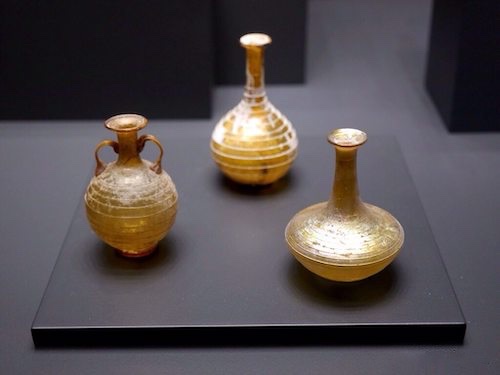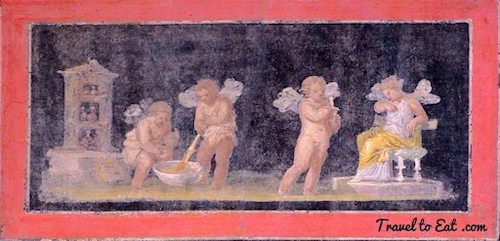
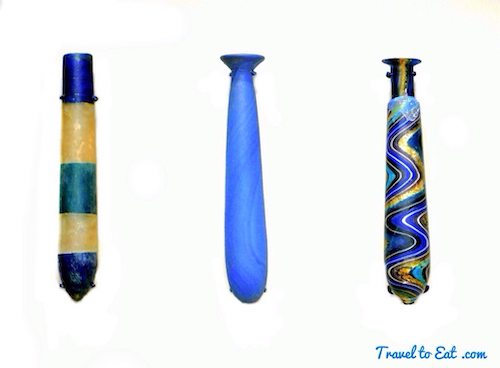
Perfumes have been known to exist in some of the earliest human civilizations, either through ancient texts or from archaeological digs. The word perfume used today derives from the Latin “per fumum”, meaning “through smoke”, probably referring to frankincense and myrrh. Perfumery, or the art of making perfumes, began in ancient Mesopotamia and Egypt and was further refined by the Romans and Persians. Scent was also an important factor of beauty. Women who smelled good were presumed to be healthy. Due to the stench of many of the ingredients used in cosmetics at the time, women often drenched themselves in copious amounts of perfume. Perfumes were very popular in Ancient Rome. In fact, they were so heavily used that Cicero claimed that, “The right scent for a woman is none at all.” They came in liquid, solid and sticky forms and were often created in a ground process with flowers or herbs and oil. Deodorants made from alum, iris and rose petals were common. The glass perfume container to the right above was created with glass rods of different colors and then swirled to create this pattern. This would have been a very expensive flask, for an upperclass woman and for me, one of the stars of this post.
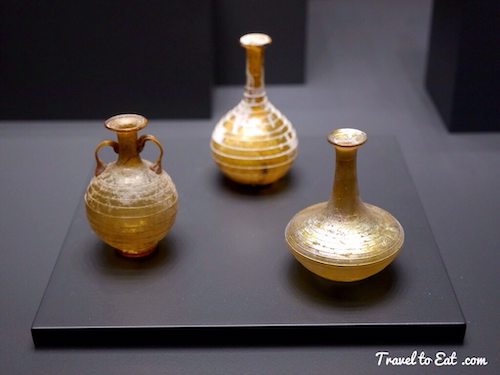
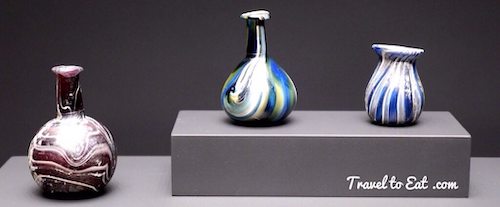
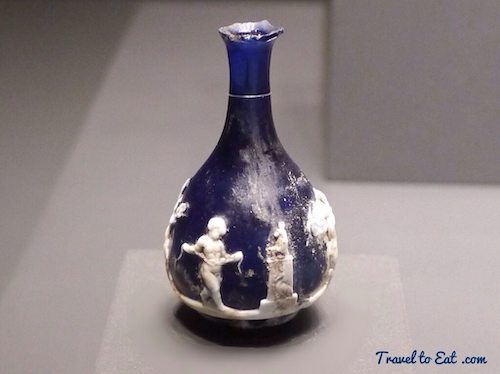
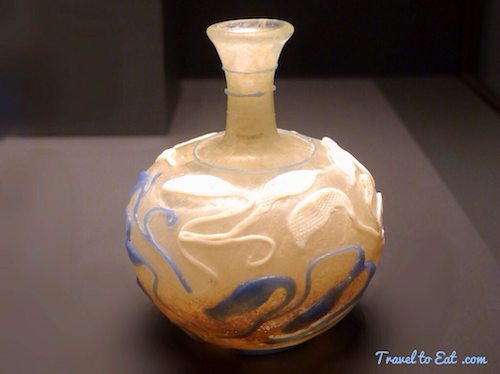
Glassblowing, invented in the 1st century CE in Syria, lowered the price of glass containers. However, although blown glass came to dominate Roman glass production, it did not altogether supplant cast glass. Especially in the first half of the first century CE, much Roman glass was made by casting, and the forms and decoration of early Roman cast vessels demonstrate a strong Greek influence. The most common color for glass was teal, cameo glass was created by encasing one color, usually blue or teal, with contrasting layers. After annealing, the outer layer was carved away like a cameo, as in the example above. Another option was to add contrasting color on the surface with glass rods as seen in the bottom example above. In 2003, the Getty purchased more than 350 glass containers from the collection of Erwin Oppenländer (1901-1988). The Oppenländer collection is remarkable for it's cultural and chronological breadth, in addition to the aesthetic quality of the pieces and the fact that there are no duplicates.
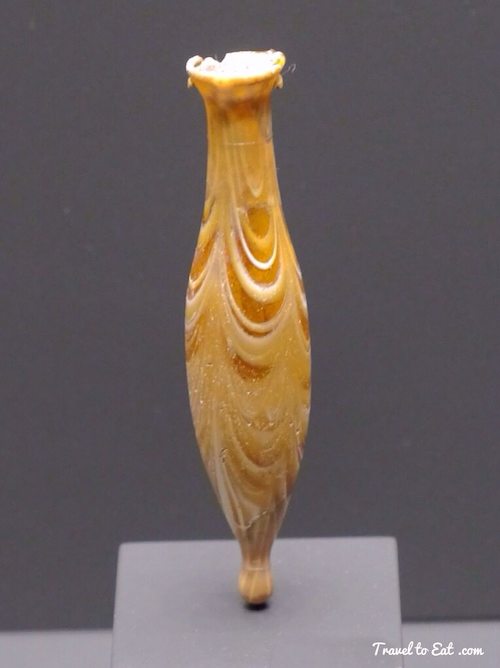
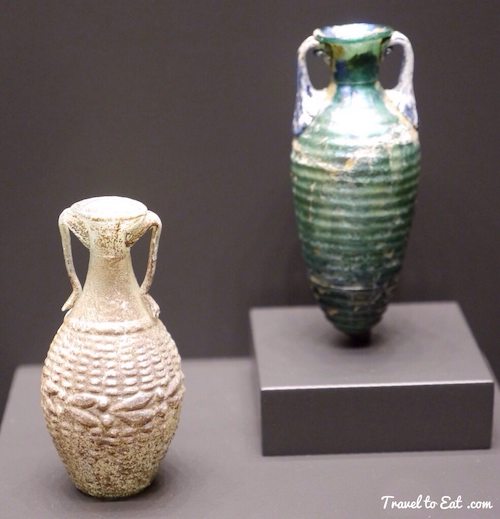
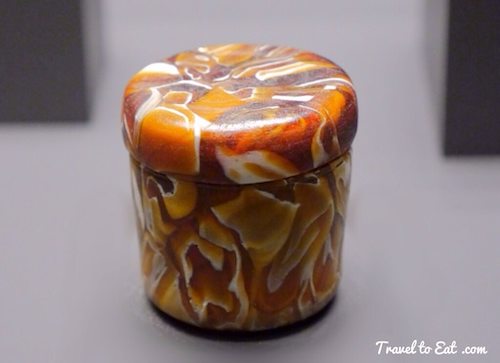
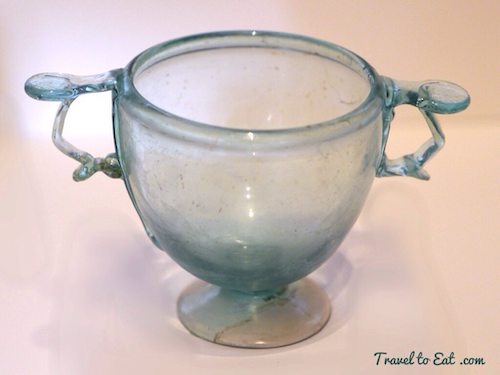
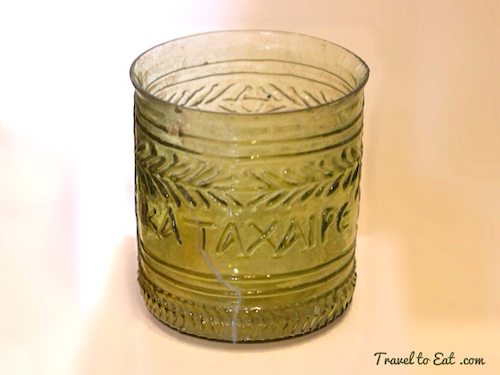
Everything from small containers and vials, bottles, elegant jugs, perfume bottles, cups, plates and ornaments were produced in Rome. Glass vessels were used as tableware, religious items, funerary goods, trade items, and for special gifts. Glassblowing allowed craftsmen to make a much greater variety of shapes than before. Combined with the inherent attractiveness of glass this adaptability encouraged people to change their tastes and habits. Glass drinking cups rapidly supplanted pottery equivalents. In fact, the production of certain types of native Italian clay cups, bowls, and beakers declined through the Augustan period, and by the mid-first century CE had ceased altogether. This invention revolutionized ancient glass production, putting it on a par with the other major industries of pottery and metalwares.
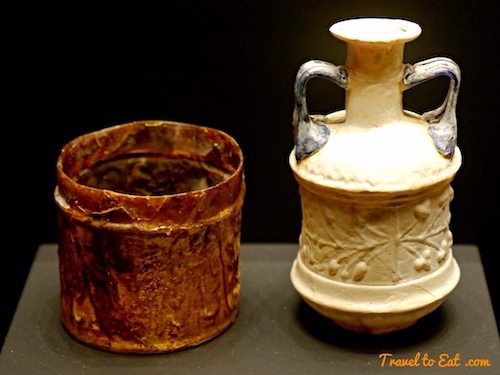
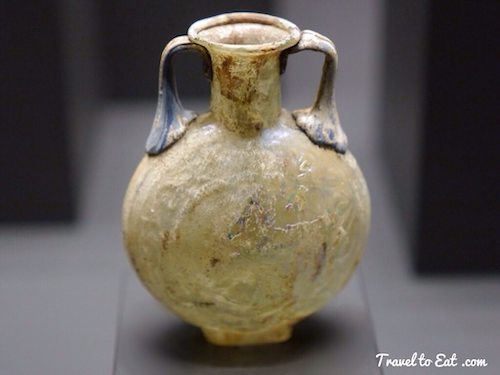
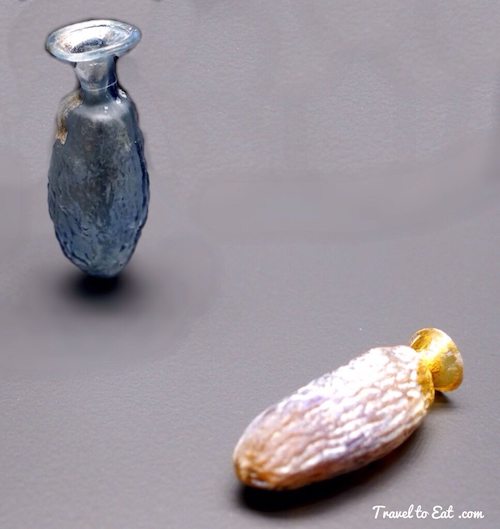
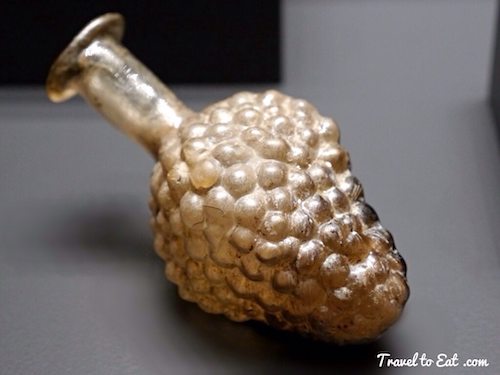
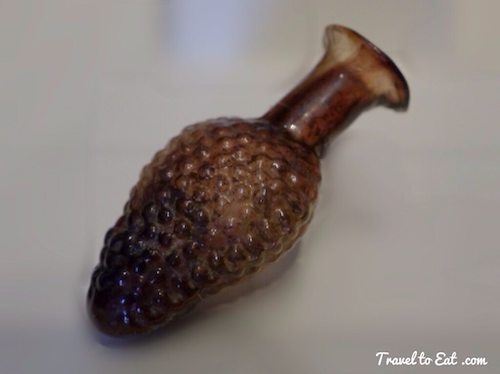
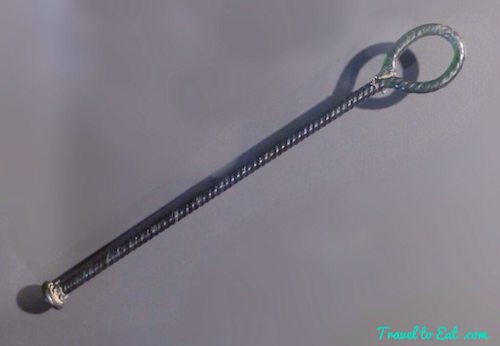
Glass was present in nearly every aspect of daily life in ancient Rome. Glass alabastra, unguentaria, balsamaria and other small bottles and glass boxes were used to contain the various oils, unguents, perfumes, and other cosmetics used by nearly every member of Roman society. Small glass boxes , pyxides, often held jewellery with glass beads, cameos, and intaglios fashioned to imitate semi-precious stones. Traders packed, sold and transported all sorts of foodstuffs and other goods across the Mediterranean in glass bottles and jars of all shapes and sizes. Researchers have described a new plant in the eastern Mediterranean, growing mainly near the coast. The importance of this discovery is that the plant is the maternal ancestor of a species of hybrid origin, Reseda odorata, used since Roman times due to the fragrance of its flowers, and whose essence was used in the ancient cosmetics industry. The perfume from this plant may have been in these containers.
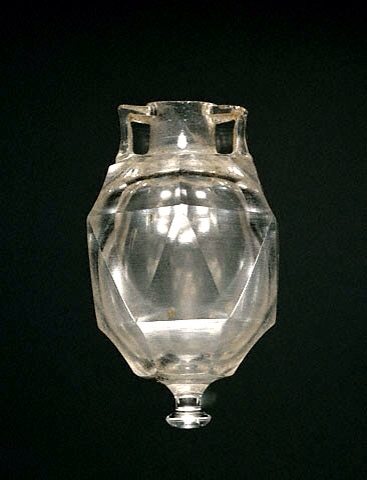
You could almost believe this rock crystal perfume bottle was a modern creation. Due to the limited sources of the material and the labor-intensive process of making the vessels, rock crystal vessels were rare and expensive luxury items in the Roman world. A small amphoriskos such as this one probably contained expensive perfumed oils. This form of amphoriskos, with angular handles and a bottom knob, was also popular in ceramic vessels of the late first century B.C. Like the Greeks before them, the Romans believed that rock crystal was ice that had been hardened through intense freezing. Fittingly, such a miraculous stone was believed to have the powers of an amulet and was highly valued.
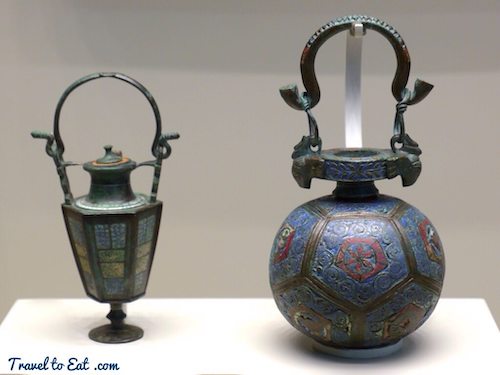
I am going to close this post with two exquisite examples of large enameled Roman perfume vessels, both gifts of Lawrence and Barbara Fleischman. Either the women who owned these were taking baths in perfume or these might be containers for vendors. Another thought is that these were household containers, used by the family and guests. The use of enamel and pentagonal panels is typical of metal vessels made in northern Gaul. In any case the past is much the same as today. After World War II new perfumers like Christian Dior and Nina Ricci started making their works of art. Perfume bottles once again became elaborate and luxurious. In the 1950s, Salvador Dali tried his hand at designing a bottle for Marquay perfumes. The creation was that of a man in a top hat and bow tie. Lancôme released Magie in 1950, held in a beautiful Baccarat bottle with stars.
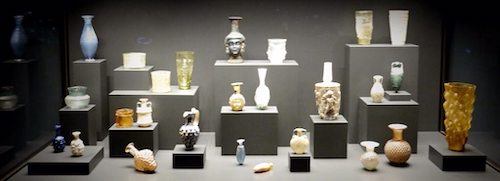
We have a friend in Paris, once in the major French industry of scent, who states that a large part of the cost of perfume is the design and production of the bottle, and specifically the cap. To me it is truly amazing, but a little predictable, that two thousand years ago Roman women had cosmetics and lovely containers to hold them. What is really remarkable is the sophistication and beauty of these bottles that would tempt even today's women to buy and be proud to own them.
[mappress mapid=”3″]
References:
Getty Museum: http://www.getty.edu
Ancient Perfume: http://blogs.getty.edu/iris/the-scent-of-love-ancient-perfumes/
History of Perfume Bottles: http://www.fragrancex.com/fragrance-information/the-history-and-evolution-of-perfume-bottles.aspx
Ancient Perfume Bottles: http://www.wysinfo.com/Perfume/Perfume_bottles.htm
History of Perfume: http://www.independent.co.uk/life-style/fashion/features/scents-and-sensibility-the-history-of-perfume-2066108.html
Ephemeral History of Perfume: https://muse.jhu.edu/books/9781421404226
Roman Perfume Plant: http://www.sciencedaily.com/releases/2013/10/131009100109.htm

